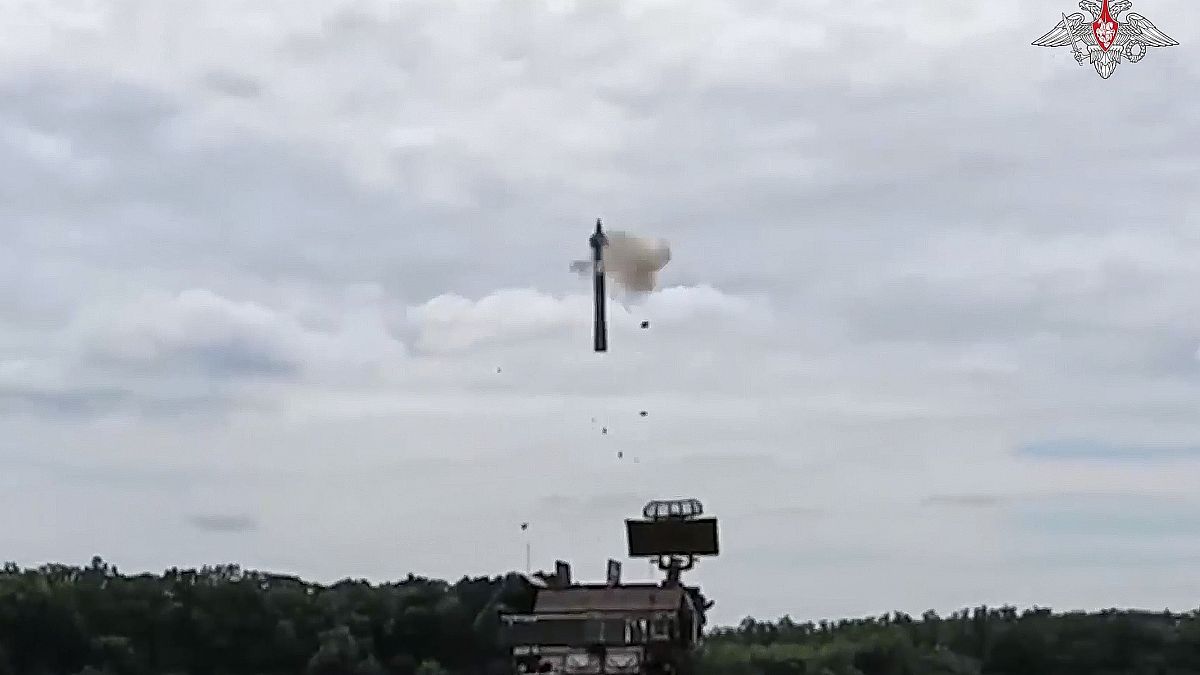The Russian Defence Ministry announced that over 100 Ukrainian drones were intercepted over Russia and occupied Crimea on Saturday, in addition to a Ukrainian drone being targeted and destroyed in the Kursk region a day earlier. Moreover, an ammunition depot and missile arsenal in southwestern Russia caught fire in an attack in the Krasnodar region, causing evacuations after triggering a series of blasts. Despite the significant drone attacks, there were no immediate reports of casualties in either Russian region.
The massive Ukrainian drone attack occurred as Ukrainian President Volodymyr Zelenskyy prepares to present a “victory plan” to President Joe Biden during his upcoming visit to the White House. Zelenskyy’s plan includes the demand for long-range striking capabilities and other weapons sought by Kyiv as a basis for future negotiations with Russia. The reluctance of the United States to allow Ukraine to use Western weapons for deep strikes inside Russia is due to fears of escalation, given Russia’s status as a major global nuclear power. Zelenskyy emphasized the importance of acting quickly, as waiting too long to use long-range missiles would render them tactically obsolete.
In addition to the drone attacks, Russian forces targeted the Ukrainian cities of Kharkiv and Dnipro on Friday evening. In Kharkiv, a Su-34 aircraft launched three guided aerial bombs from Belgorod, causing damage to several locations in the city. The mayor of Kharkiv reported an increase in the number of victims, with 15 individuals in moderate condition and several hospitalised. In Dnipro, a rocket attack destroyed several homes and damaged high-rise buildings, cars, and an educational building. Despite the destruction caused by the attacks, volunteers are working to distribute building materials to assist with repairs.
The ongoing attacks by Russian forces on Ukrainian cities highlight the escalating conflict between the two nations. The use of drones, aerial bombs, and rockets has resulted in significant damage to civilian infrastructure and caused casualties among the population. Moreover, the conflict has raised concerns about the potential for further escalation and the need for swift action to address the situation. The upcoming meeting between Zelenskyy and Biden will play a crucial role in determining the course of action moving forward, particularly regarding the provision of long-range weapons to Ukraine. The international community closely monitors the developments in the region and works towards finding a peaceful resolution to the conflict.
As the conflict between Ukraine and Russia intensifies, the impact on civilian populations in Ukrainian cities such as Kharkiv and Dnipro becomes more apparent. The destruction of homes, buildings, and vehicles underscores the need for immediate assistance and support for those affected by the attacks. The resilience and solidarity demonstrated by volunteers in distributing building materials to repair the damages reflect the unity and determination of the Ukrainian people in the face of adversity. The international community must continue to provide humanitarian aid to support the victims of the conflict and work towards a peaceful resolution to the ongoing crisis in the region.
In conclusion, the recent drone attacks by Ukraine on Russian territory, coupled with Russian airstrikes on Ukrainian cities, have further escalated the conflict between the two nations. The need for swift action and strategic intervention is crucial to address the growing humanitarian crisis and prevent further casualties and damages. The upcoming meeting between Zelenskyy and Biden presents an opportunity to discuss a comprehensive plan to address the conflict and provide necessary support to Ukraine. The international community must remain vigilant and actively engage in diplomatic efforts to de-escalate tensions and achieve a lasting peace in the region.











